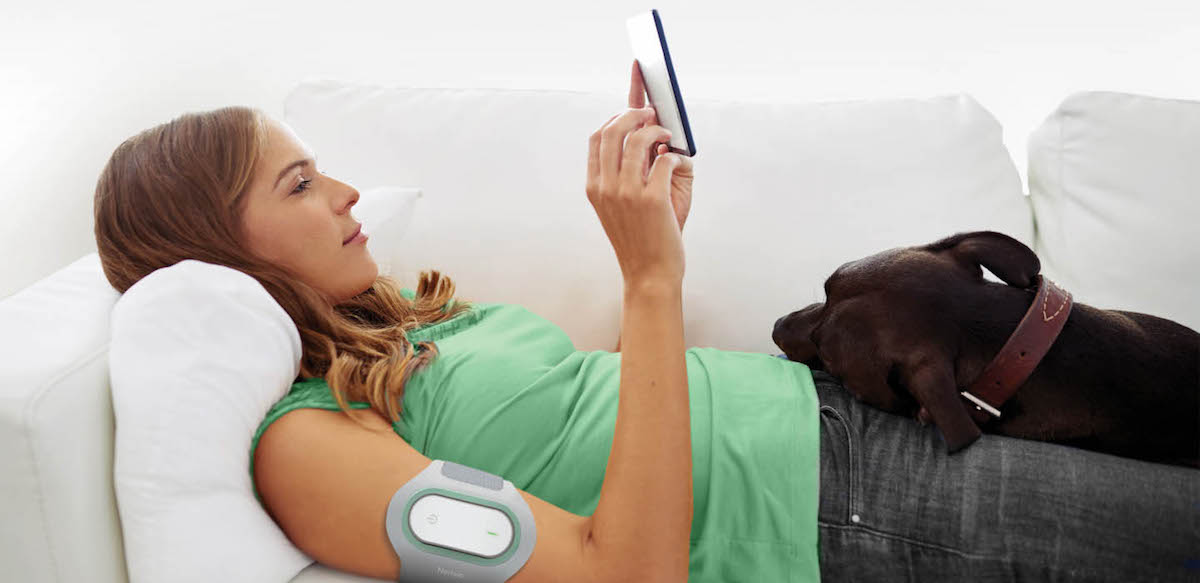<< Back
For Chronic Migraines, an App-Controlled Device That Relieves Pain

November 17, 2020
Migraine sufferers know the telling signs that another headache is on the way. Many heed it by lying down in a quiet place or taking abortive medication to try to fight it off.
A newer option, the Nerivio device from Theranica, can be strapped around the upper arm and directed by the patient to deliver electrical signals through the skin to stop migraine pain signals and avoid the headache altogether.
“This is the newest device available for the acute treatment of migraine and is designed to stop a migraine after it has started,” said Dr. Joseph Casaly, a headache specialist with the Hartford HealthCare Ayer Neuroscience Institute Headache Center in Mystic.
Nerivio, available for most migraine sufferers since late 2019, was also approved by the Food and Drug Administration in October for those with chronic migraines. People with chronic migraines experience them at least eight days a month, with some degree of headache lasting four hours or more on 15 or more days a month.
Patients apply the neuromodulation device when they feel the first twinge of migraine pain or related visual or sensory auras. The Nerivio device is wrapped onto the upper arm and, using a smartphone app, patients direct it to deliver electronic stimulation of varying degrees.
“The patient should adjust the stimulation to a level where it is felt strongly but is not painful,” Dr. Casaly said of the 45-minute treatment session. “During the stimulation, patients can carry on with regular activities or rest.”
The electrical signals are carried by nerve fibers to the brain, which then activates an intrinsic pain control mechanism called the “descending pain inhibitory pathway,” he said. This activated pain control pathway shuts off transmission of migraine pain signals, providing pain relief.
Research shows that 67 percent of patients using Nerivio experience relief within two hours vs. 39 percent of those given placebo treatment, he added. About 39 percent were pain-free within two hours, and more than half experiencing relief saw it continue for up to 48 hours after treatment.
“Nerivio treatment was also very well tolerated, with only 3.6 percent of patients experiencing side effects,” Dr. Casaly said. “In summary, while it doesn’t help everyone’s migraines, it has comparable effectiveness to many common medication therapies.”
Not every migraine sufferer can use Nerivio, however. Patients must be over 18 and not have congestive heart failure, severe heart or cerebrovascular disease, uncontrolled epilepsy or active implanted devices such as pacemakers or hearing aids. It also hasn’t been studied in pregnant women.
“There is no limit to how often the device can be used, and patients can use it alone or in combination with medication to help stop their attacks,” Dr. Casaly said.